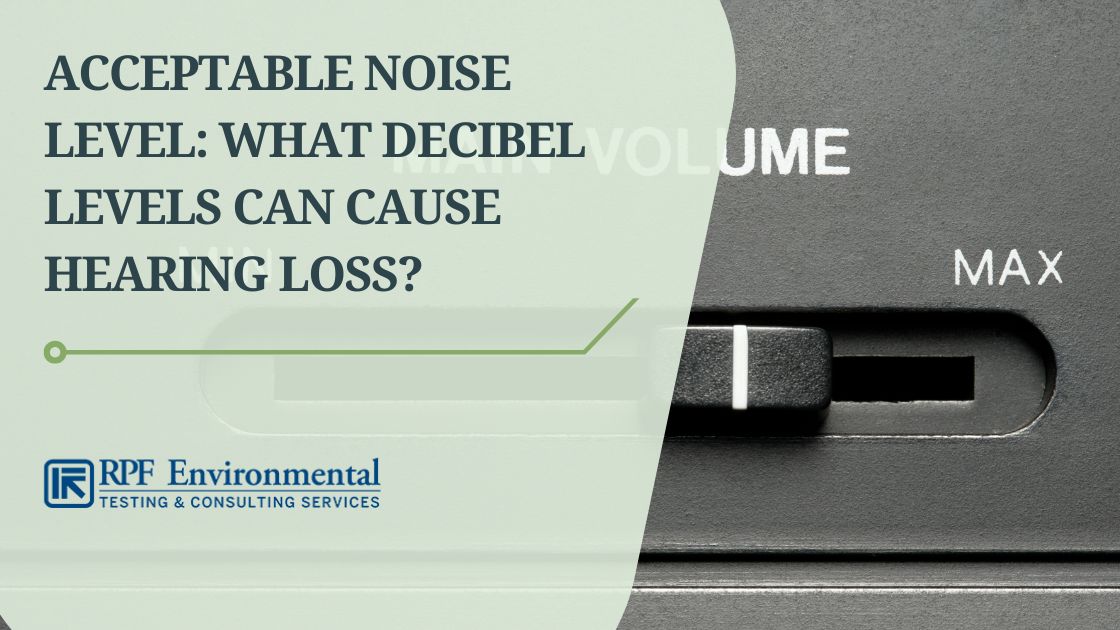The Centers for Disease Control and Prevention stated that repeated and long-term exposure to hazardous noise above 70 dBA can cause hearing loss. For occupational noise exposure, 85 dBA or higher is considered hazardous and exposure can lead to severe hearing loss over time. The louder the noise is and the nearer you are to the source, the faster you will lose your hearing.
Keep on reading to know more about acceptable decibel levels including what noise levels are safe and unsafe along with examples of noise sources. We will also discuss hearing protection standards, how to know what sound level is safe, how to prevent hearing loss and others.

RPF Environmental provides differrent environmental health and safety training courses and seminars in Illinois, Indiana, Maine, New Hampshire, Massachusetts, and throught country. We offer hazard communication, hazardous energy control, job safety analysis, and PPE requirements courses among others. Contact us now!
Definitions
What is Noise-Induced Hearing Loss?
Noise-Induced Hearing Loss (NIHL) is caused by exposure to hazardous noise that can damage your inner ear and cause permanent hearing loss.
What Is a Decibel (dB)?
A decibel is used to measure sound. However, dBA (A-weighted decibels) is used to describe sound levels as perceived by the human ear. It is a time-weighted average noise exposure over a period of time. Exposure limits set by NIOSH, EPA, and OSHA are time-weighted average exposures over an 8-hour period.
Acceptable Decibel Levels: What dB is Hearing Safe?
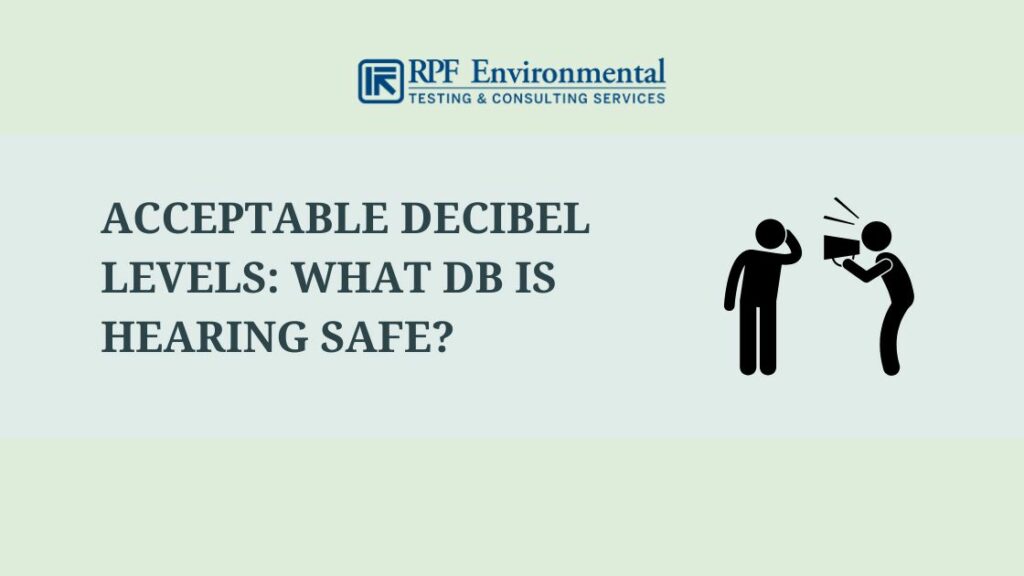
The World Health Organization (WHO) and the U.S. Environmental Protection Agency (EPA) recommended maintaining environmental noise levels at 70 dBA and below.
Here are the safe decibel levels along with some examples of common noises for your reference:
Examples of Acceptable Sound Levels
- 10 dBA – normal breathing
- 20 dBA – ticking watch, mosquito buzzing, leaves rustling
- 30 dBA – soft whisper, quiet library
- 40 dBA – refrigerator hum, quiet room
- 50 dBA – quiet suburb, moderate rainfall
- 60 dBA – normal conversation, clothes dryer, air conditioner
- 70 dBA – dishwasher, washing machine, vacuum cleaner, group conversation, freeway traffic
Hearing Protection dB Levels: At What Noise Level Is Hearing Protection Required?
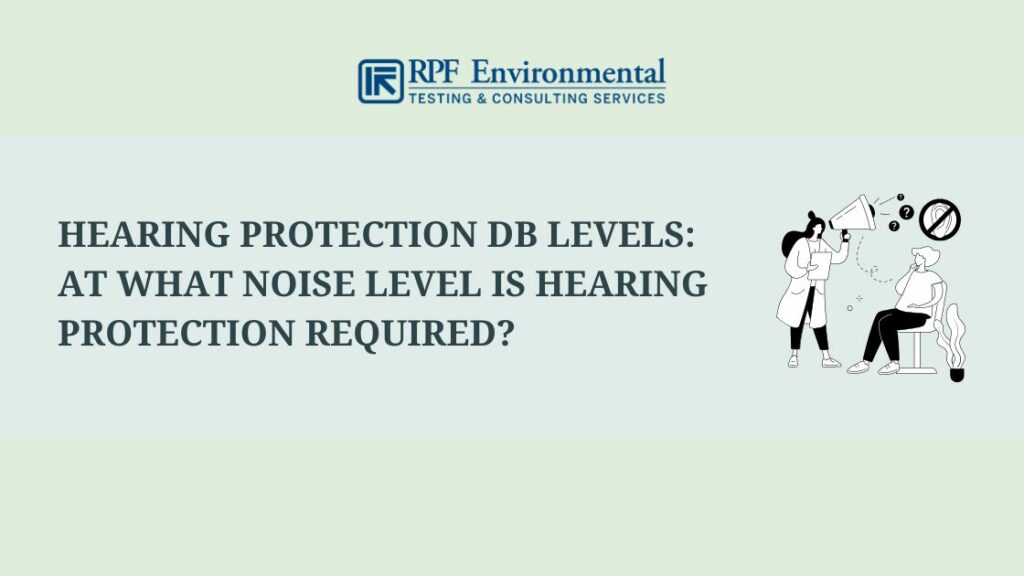
Hearing protection is required when noise levels exceed 85 dBA for occupational noise exposure. For environmental noise, EPA recommended an exposure limit of 70 dBA over a 24-hour period and 75 dBA over an 8-hour period.
Occupational Noise Exposure: Acceptable Noise Levels in the Workplace
The OSHA noise level standards require employers to provide hearing protectors to their employees who are exposed to noises at and above 85 dBA. The National Institute for Occupational Safety and Health’s (NIOSH’s) Recommended Exposure Limit (REL) for noise is also 85 dBA. This is averaged over an 8-hour period. Long-term exposure to 85-dBA noise levels or higher increases your risk of hearing loss.
85 dBA Noise Level Examples
- Vacuum cleaners
- Hand saw
- Snowblowers
- Police car siren
- Heavy traffic
- Hair dryers
- Power lawnmowers and leaf blowers
- Noisy restaurants
Exposure Level per NIOSH REL
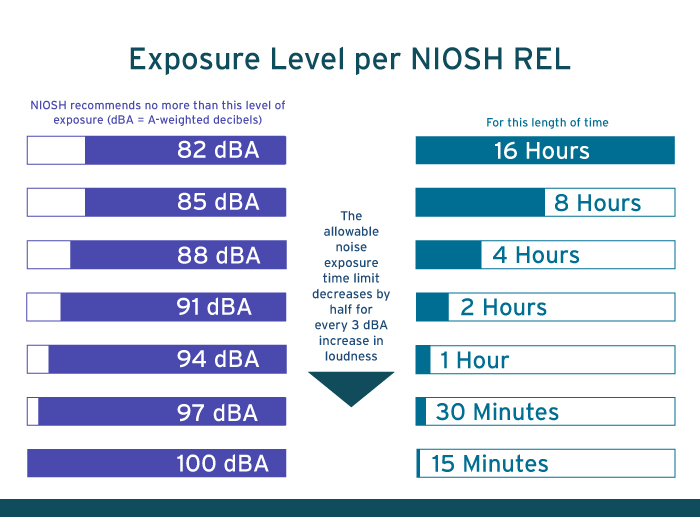
Source: Centers for Disease Control and Prevention
In addition, the NIOSH recommended safe listening times for occupational noise exposure. With every 3-dB increase in sound levels higher than 85 dBA, the safe listening time is reduced by half. For instance, if the safe listening time for 85 dBA is 8 hours, it will only be safe to listen to 88 dBA for 4 hours.
Learn more about occupational hearing loss here.
Environmental Noise Exposure: Acceptable Decibel Levels in Residential Areas
Occupational noise exposure standards mentioned above do not apply to non-occupational noise exposures such as recreational or environmental noise. Also, although EPA has recommended dB limits of 70 dBA (24-hour exposure) and 75 dBA (8-hour exposure), these shouldn’t be constituted as standards or regulations.
Sources of Loud Noise That May Cause Hearing Loss
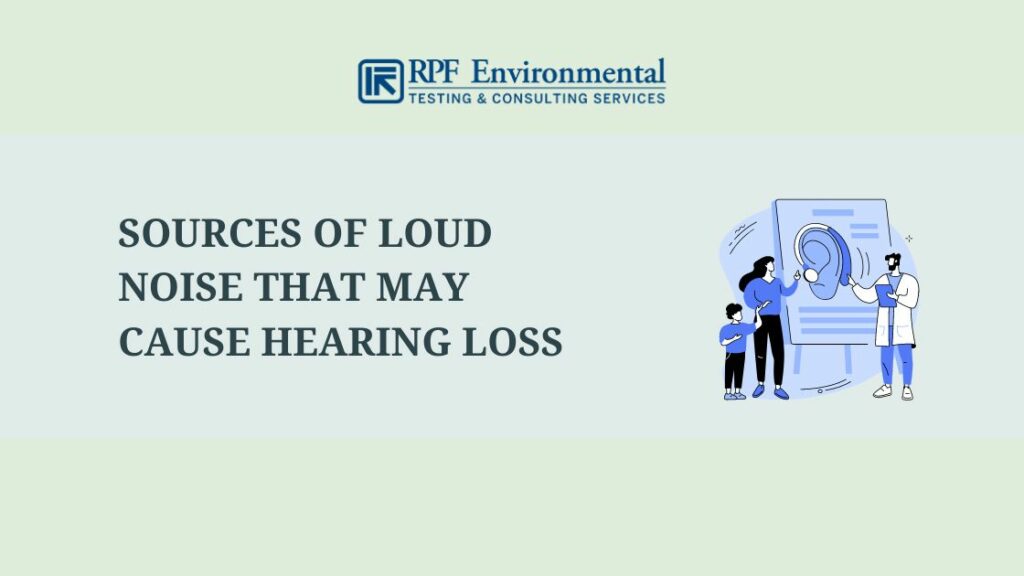
Below are examples of the sources of hazardous noise that can lead to hearing after long-term and repeated exposure:
80 to 100 dBA
- Doorbell
- Whistling kettle
- Ringing telephone
- Tools
- Food processor
- Factory machinery
- Alarm clocks
- Hair dryer
- Subway train
- Forklift
- Power lawn mower
- Kitchen blender
- Motorcycle
- Electric drill
- Woodworking Class
- Truck
- Snowmobiles
100 to 120 dBA
- Car horns
- Concerts
- Sporting events
- Personal listening devices at a maximum volume level
- Barking or shouting in the ear
- Standing near sirens
- Jet planes taking off
- Pneumatic drill
- Gas leaf blowers
- Snow blowers
- Nightclubs
- Bars
- Trombone
120 to 140 dBA
- Thunder
- Noisy squeeze toys
- Chainsaw
- Power Drill
- Jackhammer
- Airplane Taking Off
- Auto racing
- Rock concert
- Firearms
Above 140 dBA
- Launching rockets
- Bicycle Horn
- Firecrackers
- Fireworks
- Rifle
- Shotguns
- Handguns
Signs That Noise Is Too Loud: How Do You Know if the Sound Level is Safe?
Below are signs that you are exposed to unsafe noise levels:
- You need to shout when talking to someone
- You need to ask other people often to repeat themselves
- You are experiencing buzzing or ringing in the ears (tinnitus)
- You are experiencing temporary hearing loss when leaving work
- You can’t hear properly in the presence of background noise
- People seem to mumble when they talk to you
In addition, you can also use a sound-measuring device for measuring noise levels in your home or workspace like noise dosimeters and sound level meters (SLM). You can also use smartphone apps like NIOSH’s SLM app for iOS devices to help you prevent hearing loss.
Health Effects of Exposure to Loud Noise
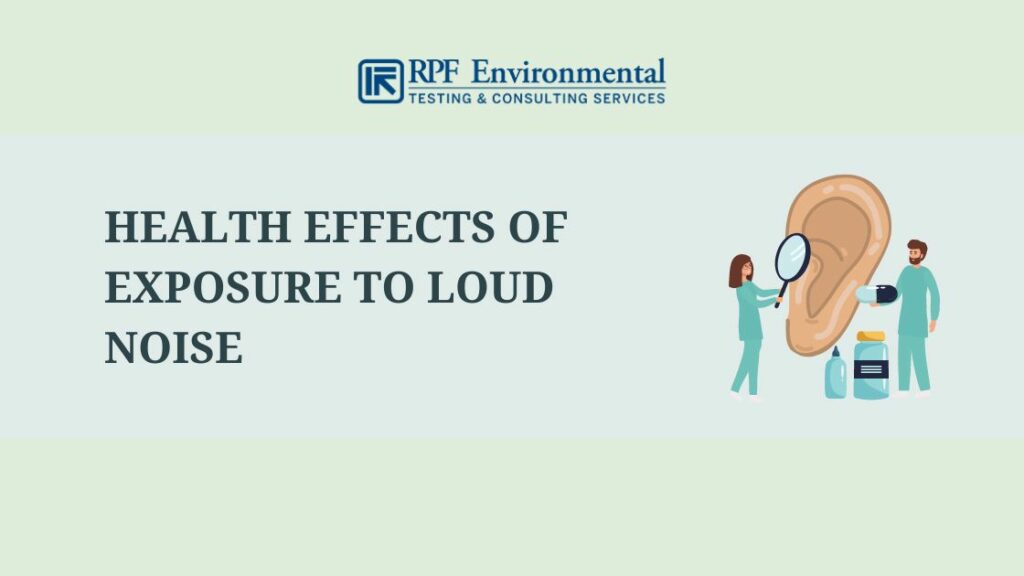
Prolonged exposure to 70-dBA environmental noise can damage your hearing. Higher noise levels such as above 85 dBA in the workplace can lead to faster hearing loss. Loud noises higher than 120 dBA can cause immediate hearing loss.
Take note that exposure to hazardous noise not only causes hearing loss but can also cause adverse health effects and impact your work and social life. How fast you’ll lose your hearing will depend on the length of exposure as well as the intensity of the noise.
One-time exposure to very loud sounds like firecrackers can cause immediate hearing loss. But oftentimes, hearing loss results from repeated exposure over time especially if you’re not wearing hearing protection and don’t take breaks to rest your ears. Also, the effects can be long-term or short-term.
The health effects of loud noise include the following:
- Stress
- Depression
- Anxiety
- Heart disease
- High blood pressure
- Reduced productivity
- Poor concentration
- Poor work or school performance
- Sleep disturbance
- Can affect the developing baby (for pregnant women)
In addition, problems in the hearing will increase the risk of work injuries mainly due to the inability to hear equipment problems or warning signals.
Factors Affecting Hearing Loss
As we’ve mentioned, the risk of hearing loss will depend on the following:
1. Noise Level
Decibel levels above 70 dBA for environmental noise and 85 dBA for occupational noise can cause damage to your ears over time.
2. Time
Regular exposure to hazardous noise will increase your risk of permanent hearing loss that can’t be treated by surgery or medicine.
3. Distance
Obviously, the nearer you are to the source of the sound, the higher your chances are of losing your hearing.
Preventing Hearing Loss: How to Protect Your Hearing
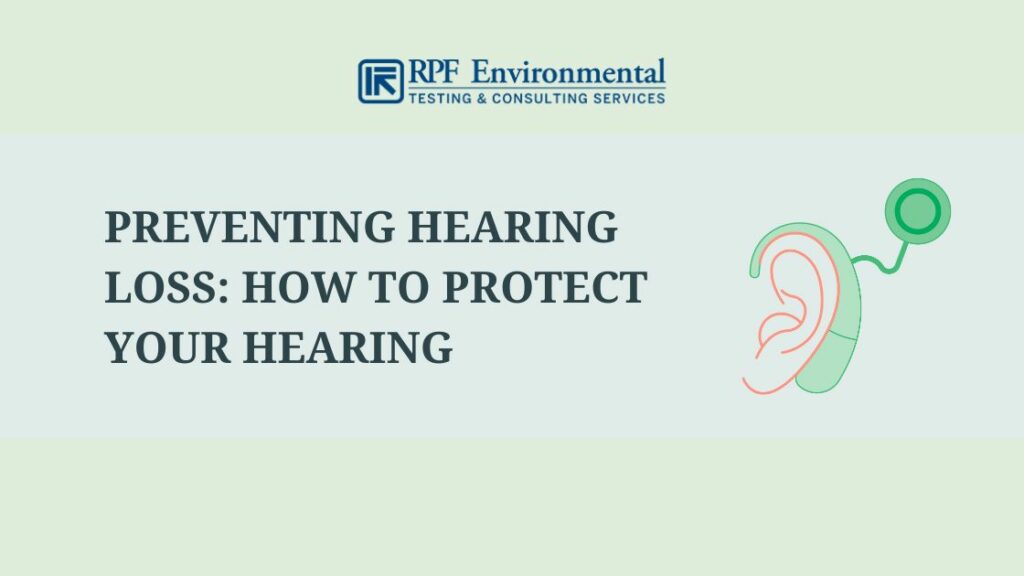
Below are a few things you can do to protect your ears:
- Use hearing protectors like earmuffs and earplugs when exposed to loud noise, especially at work.
- Avoid listening to loud noises for too long. Also, keep the volume of personal listening devices at a low level.
- Take a break from loud noises every once in a while.
- Cover your ears when emergency vehicles are passing by.
Hearing Conservation Programs (HCPs)
Employers can also implement hearing conservation programs to protect their workers from occupational hearing loss. In general, HCPs include the following:
- Monitoring noise exposure
- Providing hearing exams, hearing protection, and training
- Evaluating the adequacy of hearing protectors
Moreover, employers can use the hierarchy of controls to control exposures to workplace hazards including loud noise.
Also Read:
- Hazardous Waste Operations & Emergency Response: What is HAZWOPER?
- Lockout vs Tagout: Difference Between Lockout and Tagout
- E-Stop Lockout Devices: Can You Use Them in Lockout Procedures?
- Everything You Need to Know About Confined Spaces
FAQs
OSHA’s noise level standards require employers to implement a hearing conservation program for noises at 85 dBA and higher. The safe listening time for 85 dBA is 8 hours. This decreases by half with every increase of 3 dB for noises above 85 dBA.
Residential noise limits usually range from 55 dB to 70 dB depending on the location and the time. Noises exceeding 70 dB are considered disturbing.
EPA has identified that a noise limit of 45 decibels indoors prevents annoyance and activity interference. It allows sleeping, recreation, working, and spoken conversation.
Examples of 70-dB sounds include dishwashers, washing machines, vacuum cleaners, showers, group conversations, and freeway traffic.
Conclusion
The acceptable noise level for environmental noises is 70 dBA while the decibel level for hearing protection in occupational settings is 85 dBA and above. Employers need to follow standards for occupational noise exposure while there are no constituted standards and regulations for environmental noise.
Call us now for more information about our environmental health and safety training services in the New England region and beyond. RPF Environmental helps businesses and organizations create a safe workplace for their employees through our affordable and reliable services.

